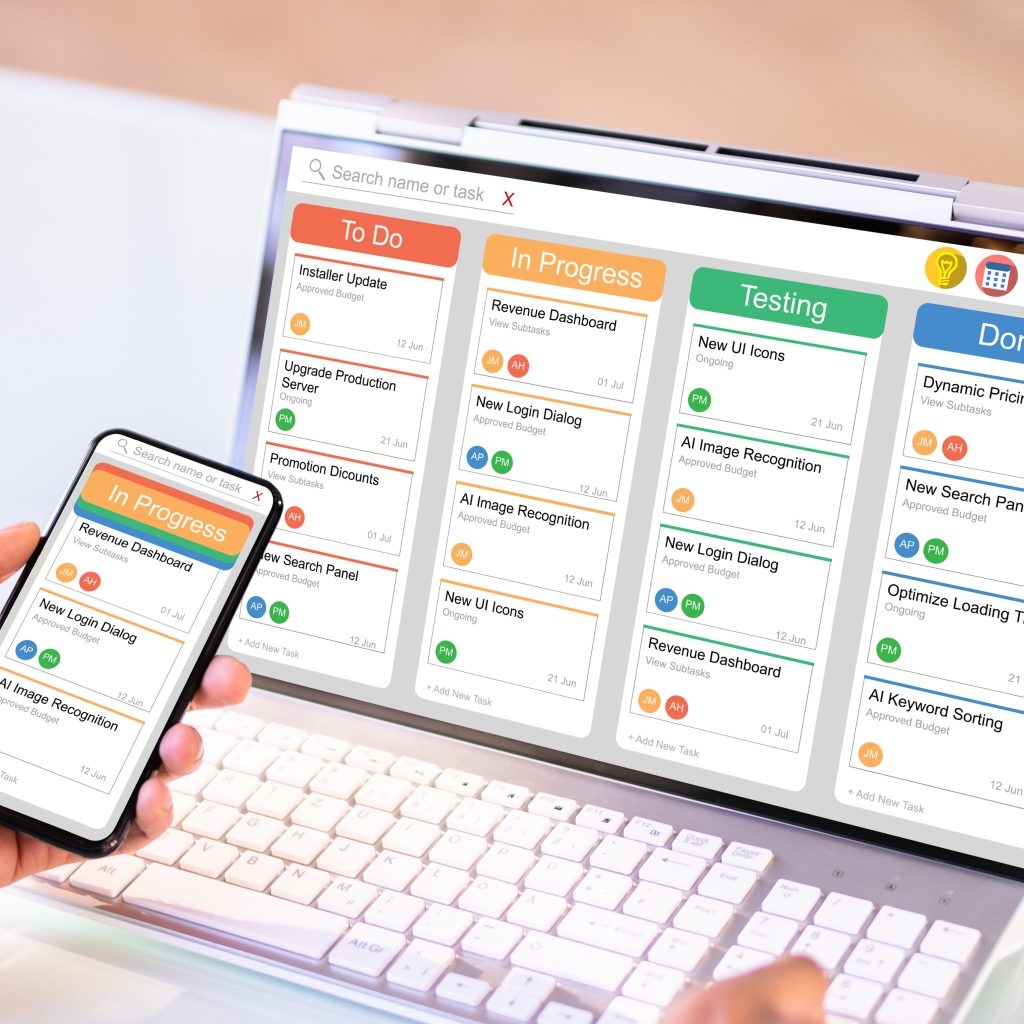Are you a coder looking to make a meaningful impact with your skills? Open source development is a great way to use your coding abilities for a cause. However, diving into the world of open source can be daunting if you’re unsure of where to start.
Open source development has gained significant popularity in recent years, as it allows developers to collaborate and contribute to projects that are freely available for anyone to use and modify. It not only provides a platform to sharpen your coding skills but also allows you to make a positive difference in various fields, from education to healthcare and beyond.
If you’re interested in coding for a cause and want to get started with open source development, this article is for you. We will discuss the benefits of open source, the steps to get involved, and common mistakes to avoid along the way. By the end, you’ll be equipped with the knowledge and resources to begin your journey as a contributor to open source projects and make a meaningful impact in the world.
Step One: Research Projects
Research projects are an essential part of academic and professional development, providing an opportunity to delve into a topic of interest and contribute to the body of knowledge in a particular field. Whether for a school assignment, a scientific study, or a business initiative, conducting thorough research is the first and most crucial step in the process. This step involves identifying a research question or problem, reviewing existing literature, and formulating a clear research plan. By laying a strong foundation in the initial stages of a research project, individuals can ensure that their work is well-informed, relevant, and valuable to the intended audience.

Identifying Needs
The first step in getting involved in open source development is to identify a need. This may be something that already exists in the community, or it may be a new and innovative solution to a problem. Before committing to coding for a cause, it’s important to understand what the project is meant to achieve and how you can best contribute.
To find an appropriate cause, there are several resources available. Websites such as GitHub, Open Source Projects, and FreeCodeCamp are great starting points for researching open source projects. Alternatively, you can join a local hackathon or volunteer with an organization that works on open source projects.
Finding Open Source Projects
There are several websites where you can explore and find open-source projects to contribute to. popular examples include Mozilla, jQuery, and Git. These websites often have cool open-source projects with detailed instructions on how to contribute. Some of the websites where you can find open-source projects to contribute to are GitHub, GitLab, Open Source Projects, Apache Software Foundation, Code Triage, and First Timers Only. These websites provide a platform for developers to explore various open-source projects and make contributions. They often have detailed instructions and guidelines for beginners on how to get started with contributing to open-source projects. Users can search for projects based on their interests, skills, and level of expertise.
Additionally, these websites often feature a wide range of projects in different programming languages, making it easier for developers to find projects that align with their expertise and interests. By exploring these websites, developers can find opportunities to collaborate with others and contribute to the open-source community.
Evaluating Projects and Contributions
When evaluating open source projects and potential contributions, it is important to start by examining the project’s documentation, issues, and pull requests. This will help you understand the project’s goals and current needs, and determine if it aligns with your skills and interests. Consider joining the project’s community and asking questions to gain a deeper understanding of its culture and processes. This will also give you a sense of how your contributions will be received and valued.
Finally, take the time to assess how your skills and interests align with the project’s needs and goals. Look for areas where you can make a meaningful impact and where you can continue to grow and develop. By thoroughly evaluating open source projects and contributions, you can find the right fit for your skills and interests, and make a valuable contribution to the community.
Step Two: Setting Up Your Development Environment
Setting up your development environment is a critical step in the software development process. This involves configuring your computer and software tools to create an efficient and collaborative workspace for coding, testing, and debugging. In this step, you will need to install necessary development tools, set up version control systems, and configure your development environment to meet the specific requirements of your project. This is a crucial step that will ensure a smooth and successful development process, so it’s important to pay attention to the details and get it right from the start.

Installing the Necessary Tools
Google Cloud Platform:
- Google Cloud SDK
- Google Cloud Console
- Compute Engine instance
Azure:
- Azure CLI
- Azure Portal
- Azure Virtual Machine
Windows:
- MSI installer for Elasticsearch, Logstash, and Kibana
- PowerShell for script execution
- Windows Server or Windows 10
Docker:
- Docker Engine
- Docker Compose
Mac OS X:
- Homebrew package manager
- Terminal for command line interface
- Mac OS X
Ansible:
- Ansible playbook
- Ansible inventory file
- SSH access to target machines
RaspberryPi:
- Raspbian operating system
- Terminal or SSH client
- RaspberryPi device
Testing and Debugging with Visual Studio Code and Other Popular Editors
To test and debug Java programs efficiently with Visual Studio Code or other popular editors, it is crucial to utilize the right extensions and tools. For Java development, some key extensions to consider include Language Support for Java™ by Red Hat, Debugger for Java, and Test Runner for Java. These extensions enable developers to write, test, and debug Java programs within the comfort of their chosen editor.
To get started, simply install these extensions from the marketplace within Visual Studio Code. Once installed, developers can utilize the power of core VS Code combined with these extensions to streamline the testing and debugging process. With Language Support for Java™, developers can benefit from advanced code intelligence, navigation, and refactoring capabilities. The Debugger for Java extension allows for seamless debugging of Java code, and the Test Runner for Java enables the running and management of test cases with ease.
By using these extensions in conjunction with Visual Studio Code, developers can effectively test and debug Java programs, ultimately improving their development workflow and productivity. The combination of these tools provides a comprehensive environment for Java development within popular editors.
Connecting to a Code Repository
To connect to a code repository in VS Code, start by opening the search feature by pressing Ctrl + Shift + F (Windows/Linux) or Cmd + Shift + F (Mac). In the search bar, type in the name of the repository or the specific files you’re looking for. Then, click on the drop-down menu next to the search bar and select “All GitHub” to search the entire GitHub platform.
Before searching for the repository, ensure that you have the necessary Java extensions installed in your workspace. This will help you write, edit, and debug your Java code easily. You can refer to the Java Project Management in Visual Studio Code for additional support and to learn how to effectively manage and organize your Java projects. Additionally, look into using Java Build Tools to help automate the process of building and packaging your Java applications.
By utilizing the search feature and selecting All GitHub, along with having the necessary Java extensions and project support in place, you can easily connect to a code repository and access the files you need for your Java project.
Choosing a Version Control System (VCS)
When choosing a Version Control System (VCS), it is important to consider the needs of the development team, the size and complexity of the project, and the available tools and resources. The development team’s familiarity with a particular VCS, their collaboration and branching requirements, and the need for integration with other tools and platforms should all be taken into account. For larger, more complex projects, a distributed VCS like Git may be more suitable, while smaller, more centralized projects may benefit from a VCS like Subversion.
Git, known for its speed and flexibility, is widely used for open-source projects and offers strong branching and merging capabilities. Meanwhile, Subversion is centralized and considered more straightforward for beginners, with a strong focus on access control and permissions. Mercurial is similar to Git but is seen as easier to use and understand for those new to VCS.
Real-world examples of these VCS in action include Git being used by teams collaborating on software development projects, Subversion being used within organizations for document control or tracking software changes, and Mercurial being used in academia for research collaboration. Each VCS has its own benefits and limitations, so it’s important to carefully assess the specific needs of the development team and the project when choosing a VCS.
Configuring Git or Other VCS for Use with an Open-Source Project
Configuring Git or any other version control system (VCS) to work with an open source project involves ensuring that the licensing requirements are met and that the use of open source code complies with the project’s guidelines.
First, you should check the open source project’s licensing requirements to understand the specific permissions and restrictions for using their code. Once you have a clear understanding of the licensing terms, you can configure your version control system to track the open source code and ensure that it is used in compliance with the project’s guidelines.
Understanding the pros and cons of leveraging open source is important when using open source components in proprietary software. Open source provides cost-effective access to high-quality code and promotes collaboration, but potential security risks must be carefully evaluated. Open source components may contain vulnerabilities that could compromise the security of proprietary software if not properly managed.
By configuring Git or another VCS to work with an open source project and understanding the potential security risks associated with open source components, you can ensure that the project remains in compliance with licensing requirements while also managing the risks associated with using open source code in proprietary software.
Step Three: Reading the Documentation & Getting Familiar With The Project’s Codebase
When working on a new project, it’s important to thoroughly understand the project’s documentation and codebase. Step Three involves reading through the project’s documentation to gain insight into the overall structure and functionality of the project. This step also requires getting familiar with the project’s codebase, including understanding the coding conventions, architecture, and how different modules or components interact with each other. Taking the time to read and understand the documentation and codebase will provide a solid foundation for making informed decisions and effectively contributing to the project.

Exploring the Project’s README File
The README file for the open source project “Exploring” was created by a team of developers at BigNameTech Company. The README provides detailed information about the project, its purpose, installation instructions, usage, and contribution guidelines.
The project is currently under active development and maintenance, with frequent updates and bug fixes. The download frequency of the project is high, with a large and active user base.
BigNameTech Company is the primary creator of the project and actively supports its development. Potential contributors are encouraged to review the README file for guidelines on how to contribute to the project.
The README file also includes information on how to report issues, submit feature requests, and join the project’s community. It serves as a comprehensive guide for both new and experienced users of the “Exploring” project.
Understanding the Dependencies and API Documentation
Understanding the dependencies and API documentation is crucial for effectively interacting with Elasticsearch APIs. The REST API is a key part of this interaction, and it is important to understand the different options, conventions, and how to filter responses. By familiarizing oneself with these aspects, developers can ensure that they are optimizing their use of Elasticsearch.
It is also important to keep tabs on any potential breaking changes, as these can impact the functionality of the API. The Elasticsearch official documentation is an invaluable resource for understanding these changes and how they may affect the use of the REST API.
By being attentive to dependencies, understanding the API documentation, and staying informed about potential breaking changes, developers can effectively leverage the power of Elasticsearch to meet their needs. The Elasticsearch website provides in-depth resources and documentation to aid in this understanding, enabling users to make the most of the API’s capabilities.
Getting to Know the Project’s Codebase
To get to know the project’s codebase, start by reviewing the project’s documentation, contribution guidelines, code of conduct, and governance policy. This will provide a solid understanding of the project’s technical aspects and organizational structure. Utilize community communication tools such as Slack, IRC, and newsletters to connect with active members and ask questions to gain insight into the project’s codebase. Engaging with the community will allow you to learn from experienced members and understand the project’s coding practices and conventions. By actively participating in these communication channels, you can also build relationships with other contributors and gain a deeper understanding of the project’s codebase. Paying close attention to the project’s documentation, guidelines, and actively engaging with the community will help you navigate the codebase and become an effective contributor.
Step Four: Making Your First Commit
After setting up your version control system, creating a repository, and adding and staging your files, it’s time to make your first commit. This important step in the process involves saving your changes and adding a brief message to describe the updates you’re making to the files. Committing your changes is a crucial part of version control, as it creates a record of the modifications you’ve made to your project.
Creating a New Feature Branch for Your Contribution
Before creating a new feature branch for your contribution, ensure that you have the necessary permissions to create branches in the code repository. Once confirmed, start by checking out a new branch from the main development branch. This can be done using the command “git checkout -b [branch_name]” where [branch_name] is appropriately named for your contribution. It’s important to use a clear and descriptive name that reflects the purpose of the new feature branch. This will help to keep track of the changes and make it easier for others to understand the purpose of the branch.
By creating a feature branch, you can work on your contribution separately from the main branch, making it easier to review and merge your changes. Remember to push the new branch to the code repository so that others can collaborate and review your work. This way, the development process remains organized and manageable for all team members involved.
Writing Code and Unit Tests in the Feature Branch
To write code and unit tests in a feature branch, begin by creating a new branch from the main codebase. This can be accomplished by using source control systems such as Git, by executing the command “git checkout -b feature-branch” which will create a new branch called “feature-branch” and switch to it.
Once in the feature branch, write the code for the new feature or functionality, making sure to include unit tests for the new code. Unit tests are essential for ensuring the quality and reliability of the code. These tests should cover various scenarios and edge cases to validate the behavior and functionality of the code.
After writing and testing the code in the feature branch, it’s time to merge the changes back into the main branch. This is typically done by creating a pull request or merge request, which will undergo a code review process to ensure the changes are aligned with the project’s standards and requirements. Once approved, the changes can be merged into the main branch, effectively integrating the new feature into the codebase.
Reviewing Changes and Submitting a Pull Request
Reviewing changes and submitting a pull request is a crucial part of contributing to a project. Start by thoroughly examining the proposed changes, ensuring they align with the project’s style and standards. Comment on any issues or suggestions for improvement.
Next, test the pull request to confirm it doesn’t break existing functionalities. Document the outcome of your testing in a comment to provide transparency and context for other developers.
Finally, submit the pull request with clear descriptions of the changes made, referencing relevant issues or supporting documentation. Include before and after screenshots if applicable to visually demonstrate the impact of the changes.
Merging Your Pull Request with the Main Branch
To merge your pull request with the main branch, start by ensuring your local copy is up to date with the original “upstream” repository by using the command “git pull upstream main” in your terminal. Resolve any merge conflicts that may arise during this process.
Next, navigate to your pull request on GitHub and click the “Merge Pull Request” button. Confirm the merge and delete the branch if it’s no longer needed.
Finally, add a comment on your pull request indicating that it has been successfully merged. This will keep everyone involved informed about the status of the pull request.

Conclusion
In conclusion, getting started with open source development can be a daunting task. However, it is an incredibly rewarding experience and a great way to give back to the technology community and make your mark on the world. With the right mindset and resources, you can make an impact on many different projects. You will gain invaluable experience that will help you become a better programmer. So get out there and start coding for a cause!
